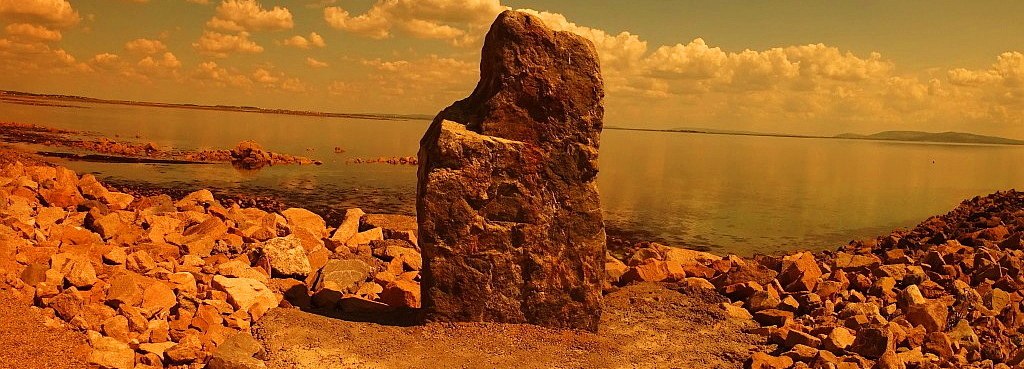The Burren
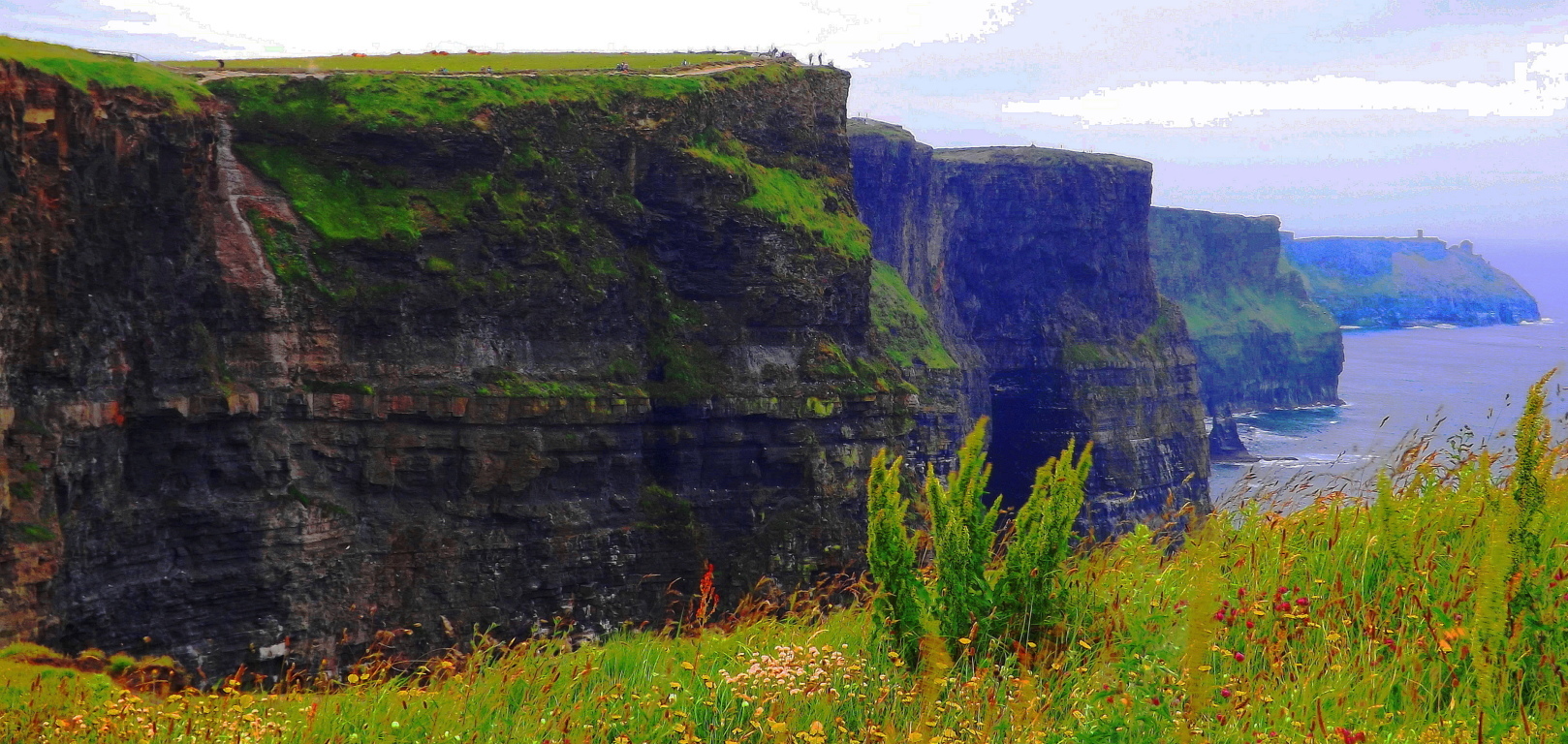 Location: County Clare/Coastline/ Cliffs/Mountains/South of Galway
Location: County Clare/Coastline/ Cliffs/Mountains/South of Galway
Note: It is a beautiful thought that some places in the world are simply known as ‘regions’. The Burren is every bit a national park as any of the existing national parks in Ireland, and yet it is simply a region.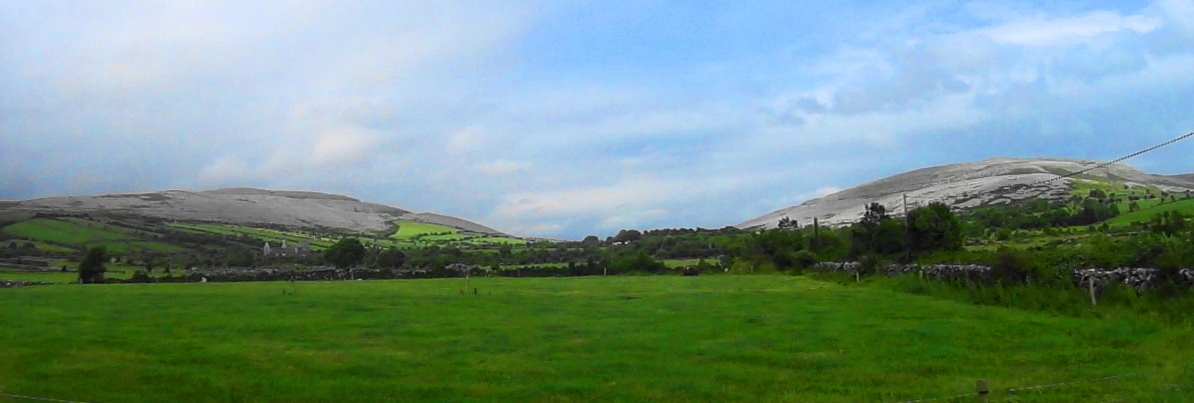 No modern organization monitors this area overall. It is sustained by the endearing love of the Irish generations that have lived here since Celtic times. These are the people that remained through the Medieval-to-Colonial British incursions, and The Famine, and reveal an incredibly deep connection. A single sojourning through this striking landscape is all a hiker needs to understand this connection.
No modern organization monitors this area overall. It is sustained by the endearing love of the Irish generations that have lived here since Celtic times. These are the people that remained through the Medieval-to-Colonial British incursions, and The Famine, and reveal an incredibly deep connection. A single sojourning through this striking landscape is all a hiker needs to understand this connection.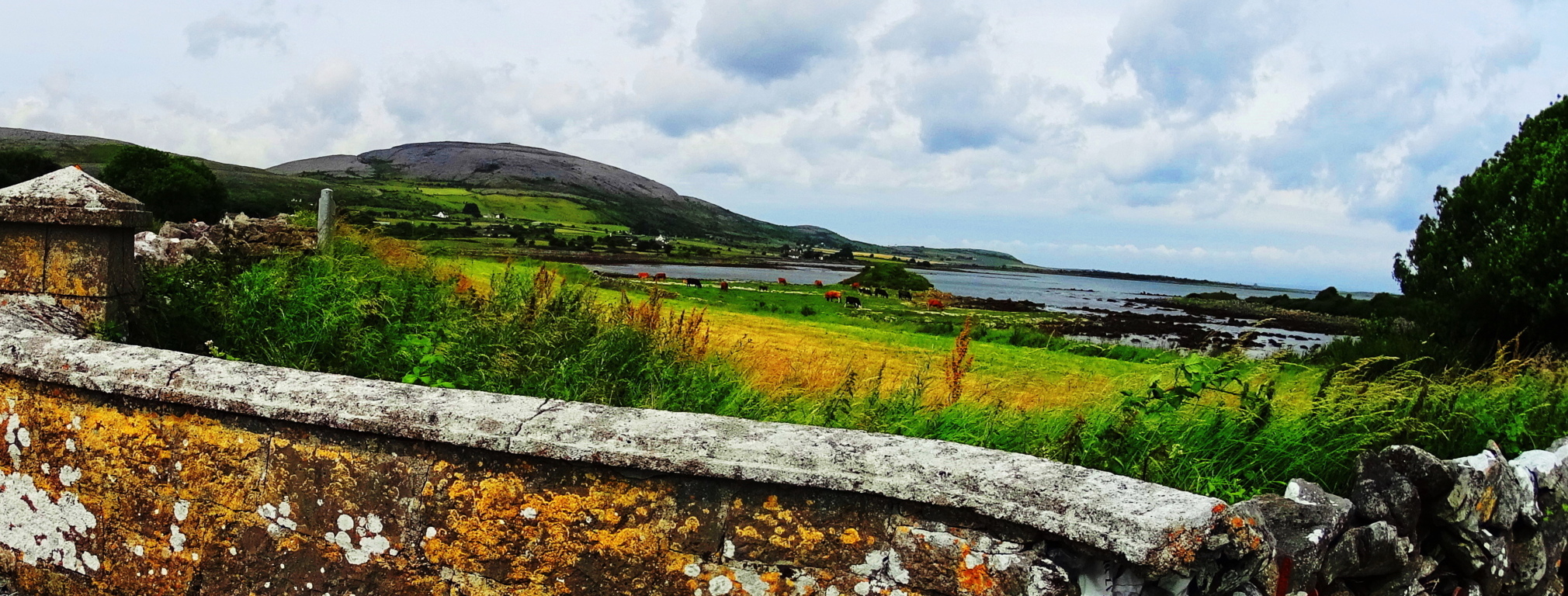 The roads and hills are open to hiking and climbing, as well as designated pathways. Make your way to the entry points as best you can by researching, exploring, and engaging the people of the area. To begin, the N18 highway runs south of Galway and connects to N67, which flows into the dimension that is The Burren. The gateway to this dimension is Dunguire Castle, perhaps the most beautiful in all of Ireland.
The roads and hills are open to hiking and climbing, as well as designated pathways. Make your way to the entry points as best you can by researching, exploring, and engaging the people of the area. To begin, the N18 highway runs south of Galway and connects to N67, which flows into the dimension that is The Burren. The gateway to this dimension is Dunguire Castle, perhaps the most beautiful in all of Ireland.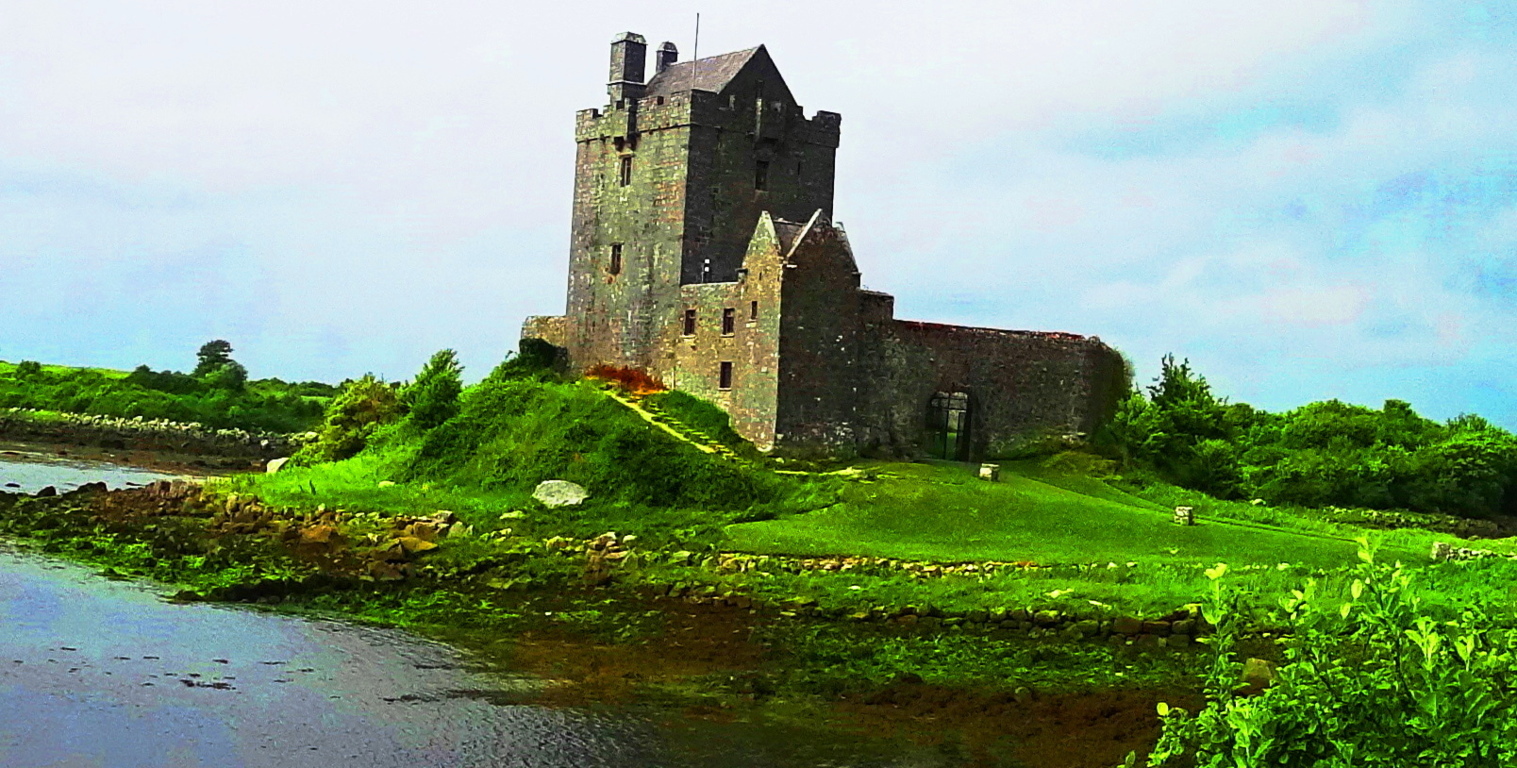 Embraced almost entirely by a bay that runs out of the harbor town of Kinvarra, Dunguire looks to be floating on a small island, slightly separated from reality.Dunguire’s grounds have pathways around the castle, and the courtyard is also accessible. Feel free to park in Kinvarra and walk a scenic mile to Dunguire’s 15th century gates. Kinvarra is the pivot-point for the turn westward, around the edge of the bay, and into the enchanted zones.
Embraced almost entirely by a bay that runs out of the harbor town of Kinvarra, Dunguire looks to be floating on a small island, slightly separated from reality.Dunguire’s grounds have pathways around the castle, and the courtyard is also accessible. Feel free to park in Kinvarra and walk a scenic mile to Dunguire’s 15th century gates. Kinvarra is the pivot-point for the turn westward, around the edge of the bay, and into the enchanted zones. In this place the small caps of the mountains are covered in white stones, with rock-stricken hillsides that are the color of the moon.
In this place the small caps of the mountains are covered in white stones, with rock-stricken hillsides that are the color of the moon.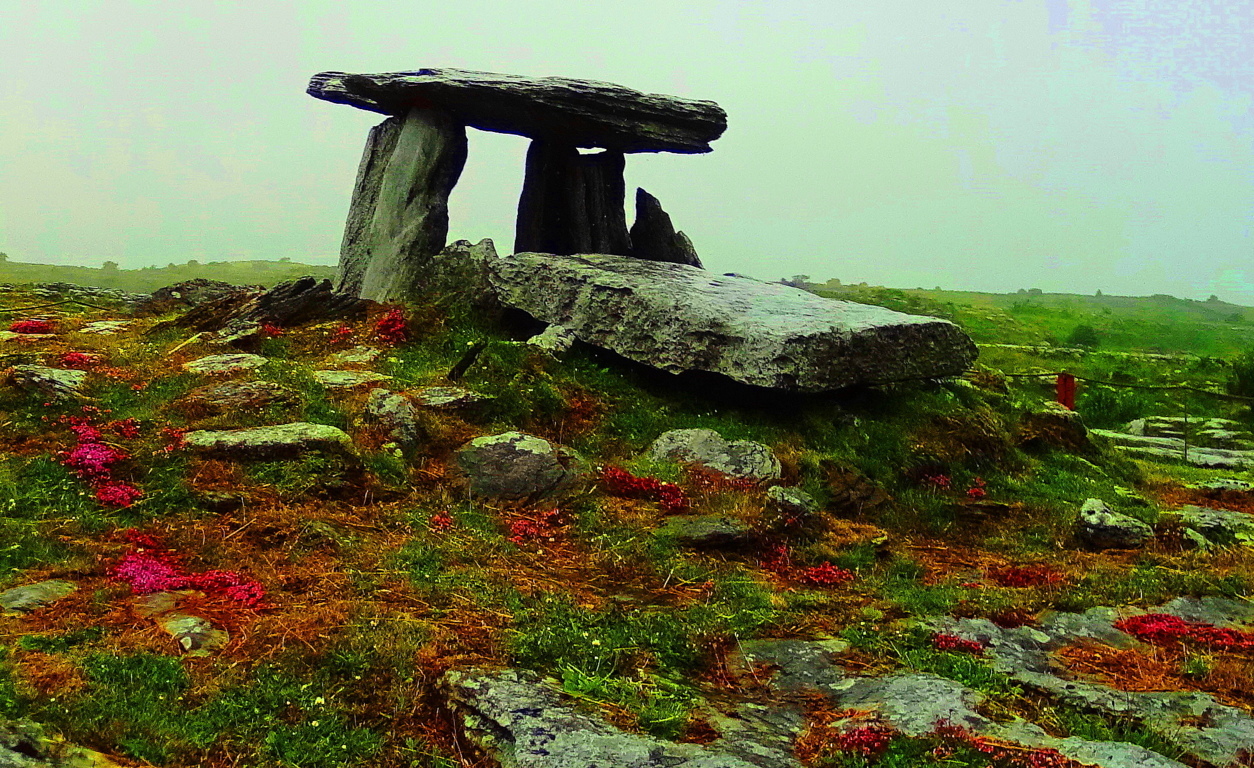 These undulating hills hide incredible monuments intertwined with the stone-walls and hedges. The Poulnabrone Dolmen has sat 17 miles southwest of Kinvarra for over 6000 years, and is the most iconic Dolmen in the world.
These undulating hills hide incredible monuments intertwined with the stone-walls and hedges. The Poulnabrone Dolmen has sat 17 miles southwest of Kinvarra for over 6000 years, and is the most iconic Dolmen in the world. This iconography is due to the otherworldly context of the megalith, surrounded by free-sitting boulders in the peripheral distance, and supported by smoothly grooved rows of rock beneath it. It looks to be the very crossroads of heaven and hell. At a glance, it becomes totally understandable as to why they call these Dolmens “Portal Tombs”, meant to send the spirits of Celts to the stars. The 6 ton capstone, which is placed six feet above the ground, looks like a stone-satellite for receiving messages from the solar system. The Poulnabrone Dolmen has a similar look to the Gortnavern Dolmen in Donegal (Pictured below/left),
This iconography is due to the otherworldly context of the megalith, surrounded by free-sitting boulders in the peripheral distance, and supported by smoothly grooved rows of rock beneath it. It looks to be the very crossroads of heaven and hell. At a glance, it becomes totally understandable as to why they call these Dolmens “Portal Tombs”, meant to send the spirits of Celts to the stars. The 6 ton capstone, which is placed six feet above the ground, looks like a stone-satellite for receiving messages from the solar system. The Poulnabrone Dolmen has a similar look to the Gortnavern Dolmen in Donegal (Pictured below/left),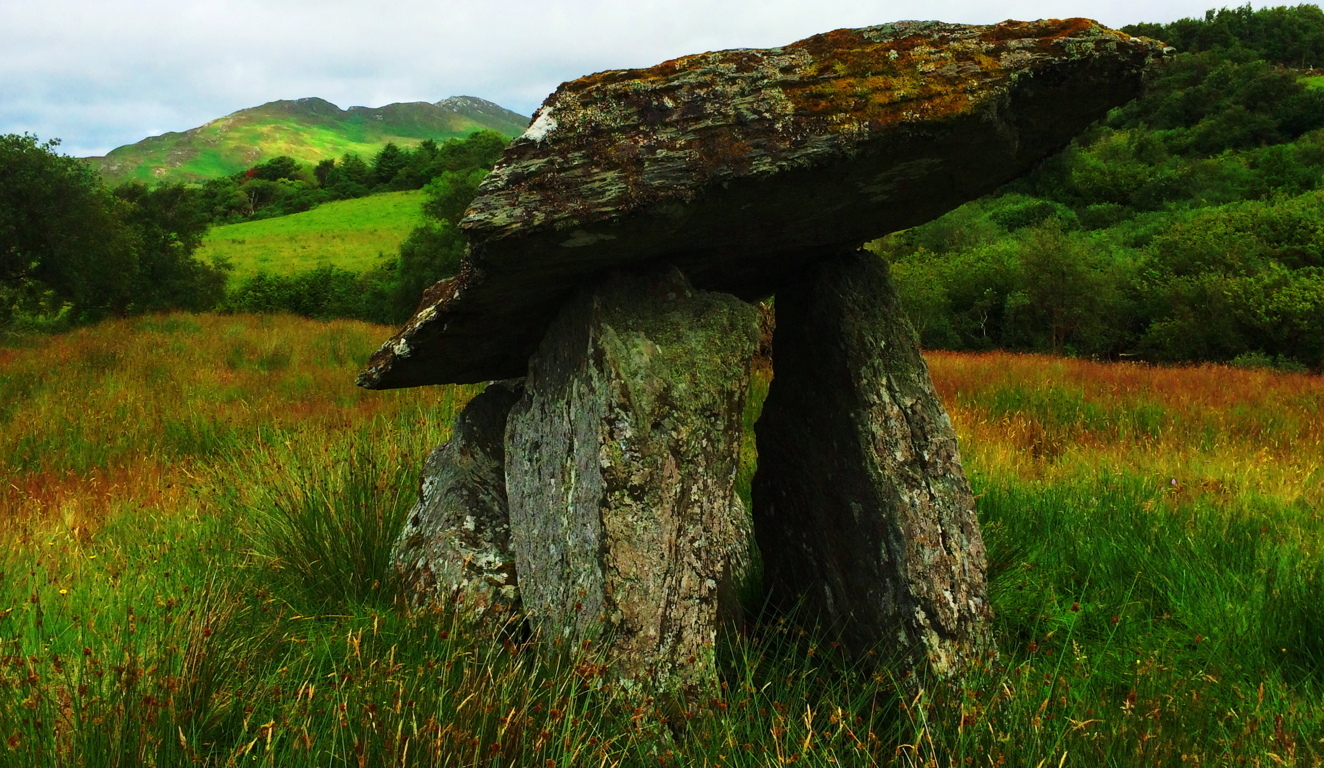 far to the north, with a massive but slim capstone and similar supporting stones. Other Dolmen’s in various Celtic regions abroad sponsor much larger megalithic features, as well as different styles. This Dolmen can be found just off the R480 road, which is a classic country-drive with tunnels of tight green hedges. Be prepared. The best regulated hiking trail of the area is, without any doubt, the Cliffs of Moher. A Medieval tower sits at the northerly edge of the excellent trails that run along the dramatic Atlantic cliff, which drops over 700 feet below. These trails run for about 6 miles along the ledge, so it is just over a half day of hiking if you so choose.
far to the north, with a massive but slim capstone and similar supporting stones. Other Dolmen’s in various Celtic regions abroad sponsor much larger megalithic features, as well as different styles. This Dolmen can be found just off the R480 road, which is a classic country-drive with tunnels of tight green hedges. Be prepared. The best regulated hiking trail of the area is, without any doubt, the Cliffs of Moher. A Medieval tower sits at the northerly edge of the excellent trails that run along the dramatic Atlantic cliff, which drops over 700 feet below. These trails run for about 6 miles along the ledge, so it is just over a half day of hiking if you so choose.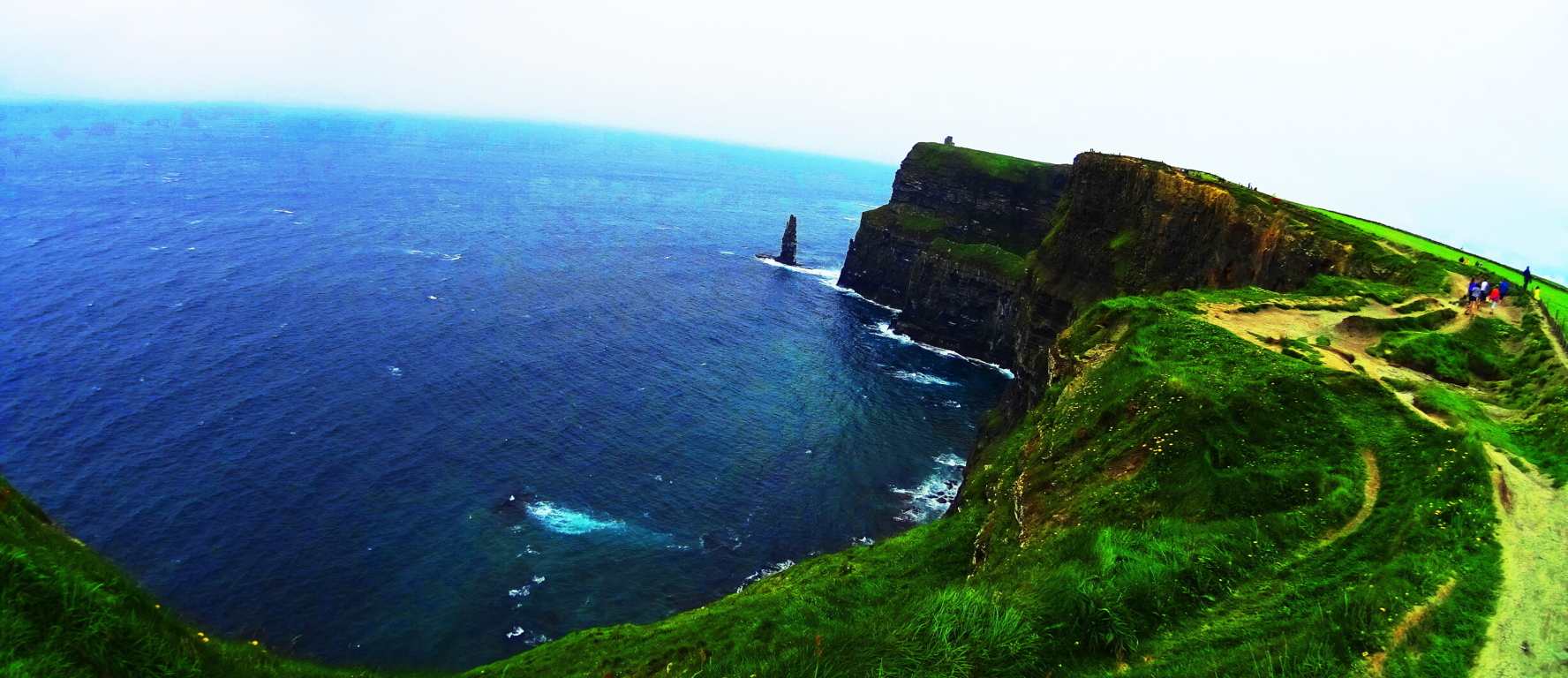 The coastal view and the towns to the south are epic in this area, so take your time on a fairly level trek. All throughout the country side are thatched cottages and ancient abbeys. Perhaps just as haunting as these ancient places are some of the abandoned cottages of families that could not ride-out The Famine, along the country roads.
The coastal view and the towns to the south are epic in this area, so take your time on a fairly level trek. All throughout the country side are thatched cottages and ancient abbeys. Perhaps just as haunting as these ancient places are some of the abandoned cottages of families that could not ride-out The Famine, along the country roads.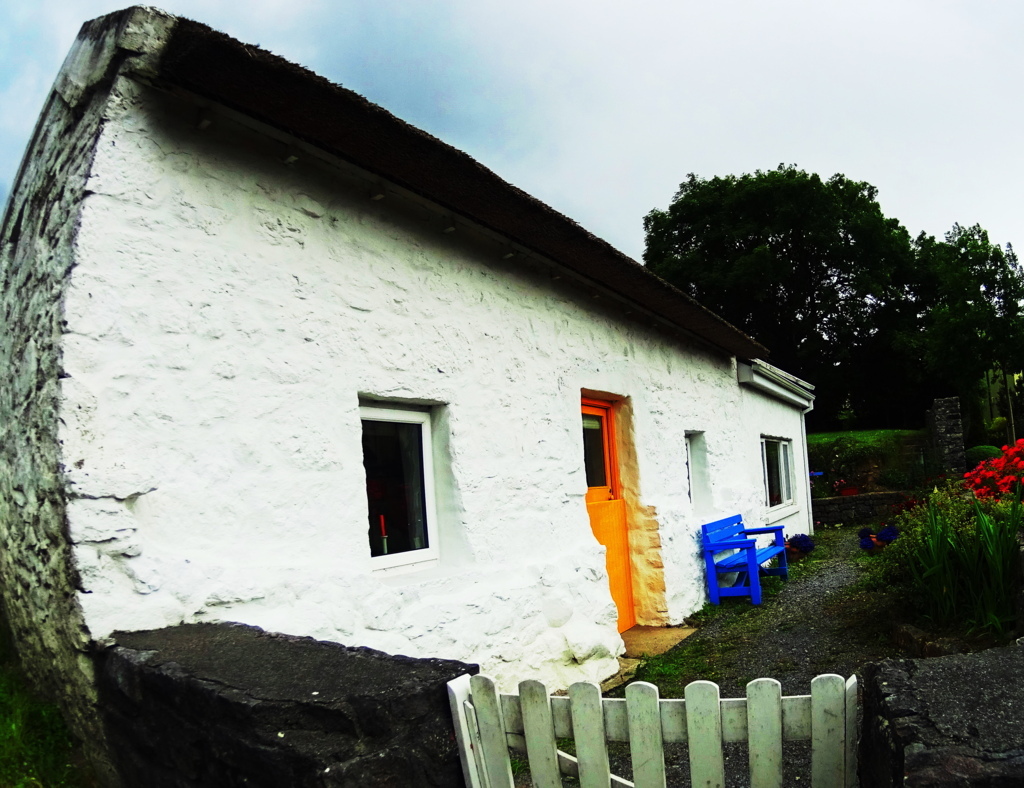
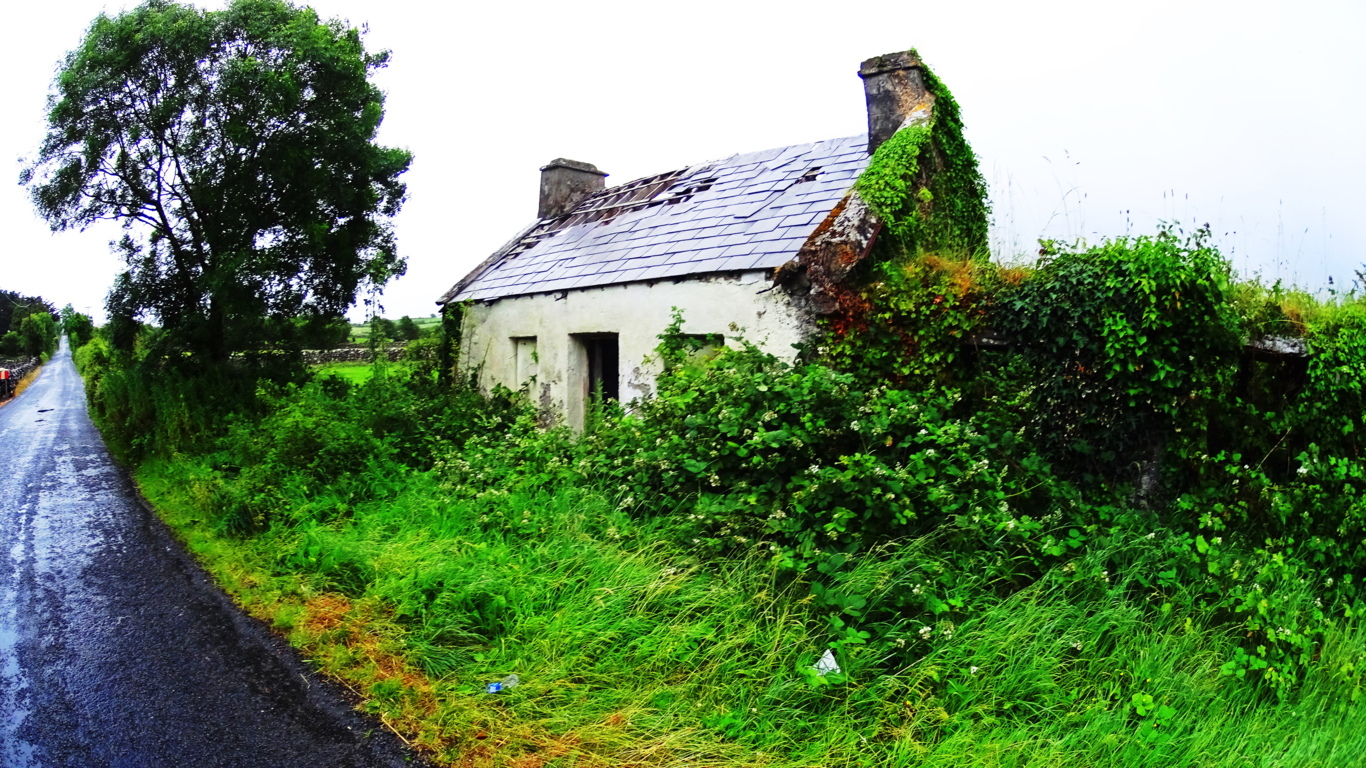 This is a place where hikers and photographers should spend more than a few days. The Burren has that “beyond time” capability to make a traveler forget about the outside world. Legendary author J.R.R Tolkien lived in, and utilized, this landscape at times, along with places in Wales and England, for the inspiration of the descriptions of the magical Shire of his stories. Amazingly, after all this wonder, it is yet, and still, simply a region. This is perhaps the best reasoning as to why seeking and finding is sometimes necessary for true adventurers, where many miles outside of the commonly ‘commercialized experience’ of domesticated parks, real indigenous surprises still exist in the regions of lessor known places.
This is a place where hikers and photographers should spend more than a few days. The Burren has that “beyond time” capability to make a traveler forget about the outside world. Legendary author J.R.R Tolkien lived in, and utilized, this landscape at times, along with places in Wales and England, for the inspiration of the descriptions of the magical Shire of his stories. Amazingly, after all this wonder, it is yet, and still, simply a region. This is perhaps the best reasoning as to why seeking and finding is sometimes necessary for true adventurers, where many miles outside of the commonly ‘commercialized experience’ of domesticated parks, real indigenous surprises still exist in the regions of lessor known places.
